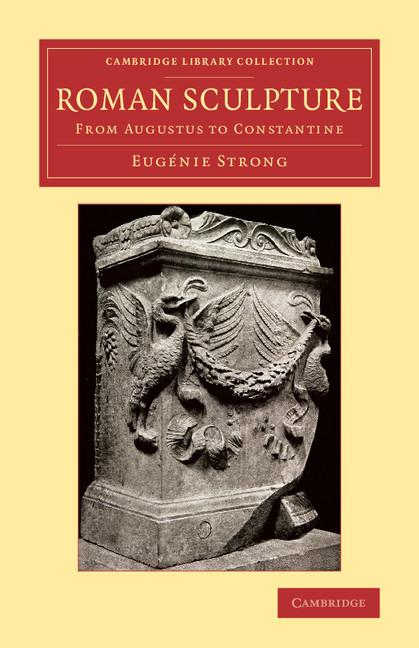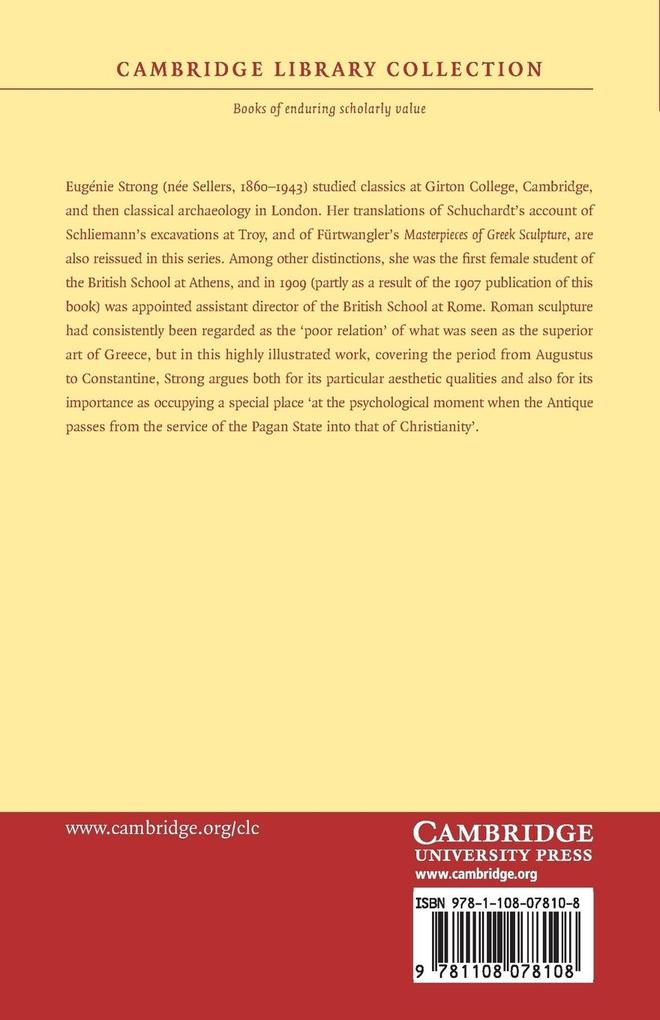
Zustellung: Mo, 11.08. - Do, 14.08.
Versand in 5 Tagen
VersandkostenfreiBestellen & in Filiale abholen:
Eugénie Strong (née Sellers, 1860-1943) studied classics at Girton College, Cambridge, and then classical archaeology in London. Her translations of Schuchardt's account of Schliemann's excavations at Troy, and of Fürtwangler's Masterpieces of Greek Sculpture, are also reissued in this series. Among other distinctions, she was the first female student of the British School at Athens, and in 1909 (partly as a result of the 1907 publication of this book) was appointed assistant director of the British School at Rome. Roman sculpture had consistently been regarded as the 'poor relation' of what was seen as the superior art of Greece, but in this highly illustrated work, covering the period from Augustus to Constantine, Strong argues both for its particular aesthetic qualities and also for its importance as occupying a special place 'at the psychological moment when the Antique passes from the service of the Pagan State into that of Christianity'.
Inhaltsverzeichnis
Preface; Chronological table; Introduction; 1. The Augustan age; 2. Augustan decoration; 3. Augustus to Nero; 4. The Flavian age; 5. Flavian relief; 6. The principate of Trajan; 7. The column of Trajan; 8. The Trajan column (cont.); 9. The principate of Trajan (cont.); 10. Principate of Hadrian; 11. Hadrianic sarcophagi; 12. The Antonine period; 13. Severus to Diocletian; 14. The principate of Constantine; 15. Roman portraiture from Augustus to Constantine; Appendix; Index.
Produktdetails
Erscheinungsdatum
27. Januar 2015
Sprache
englisch
Untertitel
Sprache: Englisch.
Seitenanzahl
648
Autor/Autorin
Eugénie Strong
Verlag/Hersteller
Produktart
kartoniert
Gewicht
901 g
Größe (L/B/H)
216/140/38 mm
ISBN
9781108078108
Entdecken Sie mehr
Bewertungen
0 Bewertungen
Es wurden noch keine Bewertungen abgegeben. Schreiben Sie die erste Bewertung zu "Roman Sculpture" und helfen Sie damit anderen bei der Kaufentscheidung.











